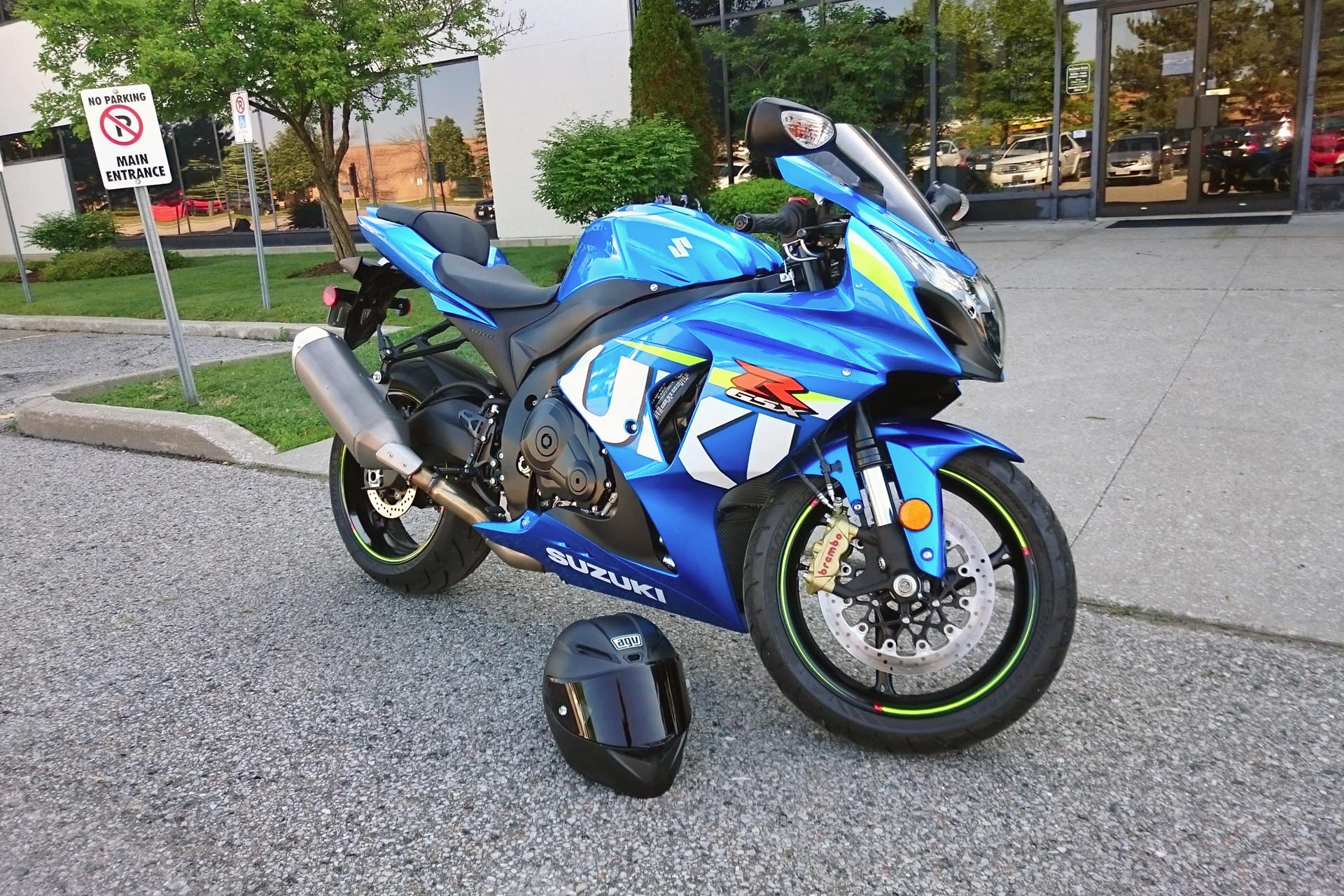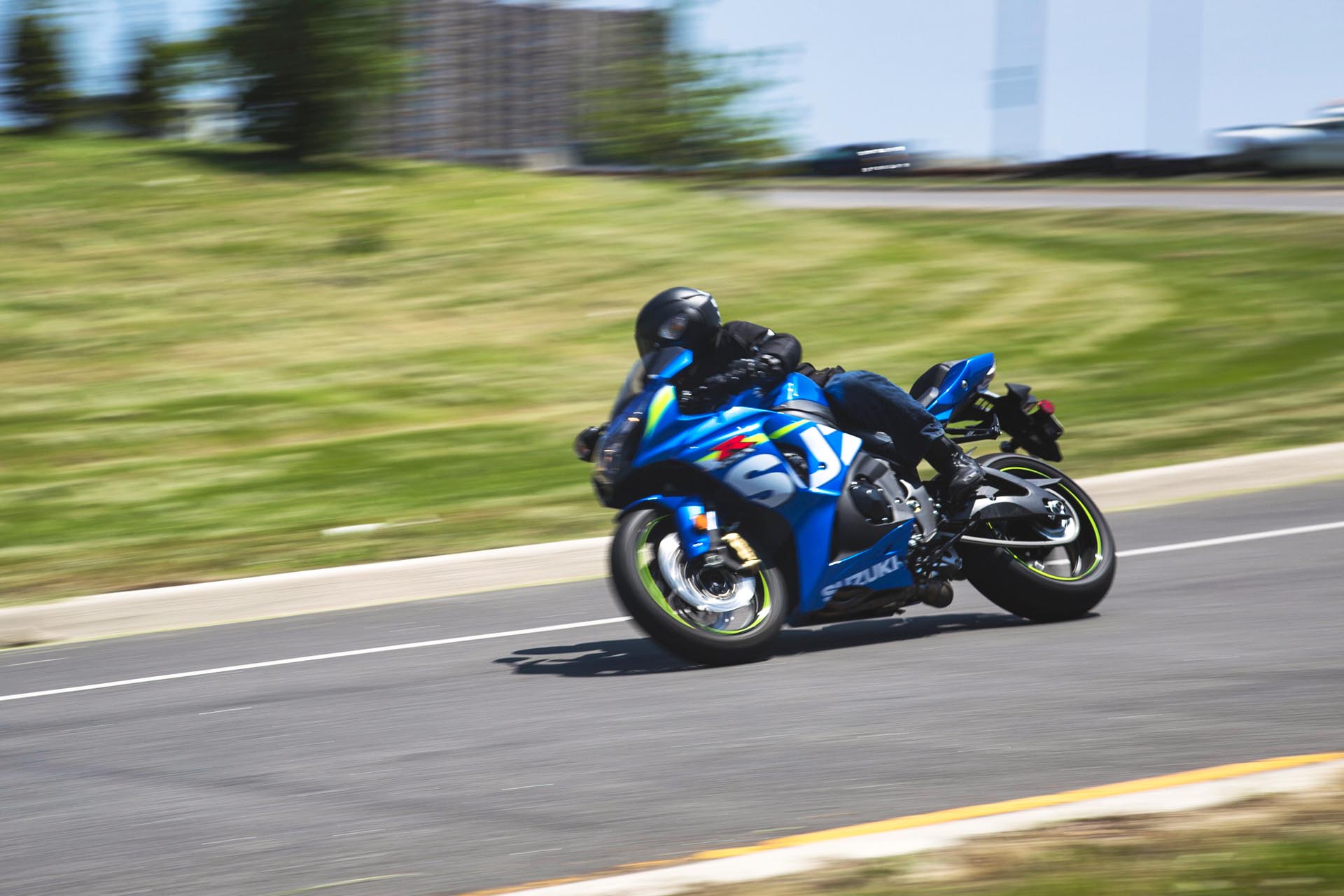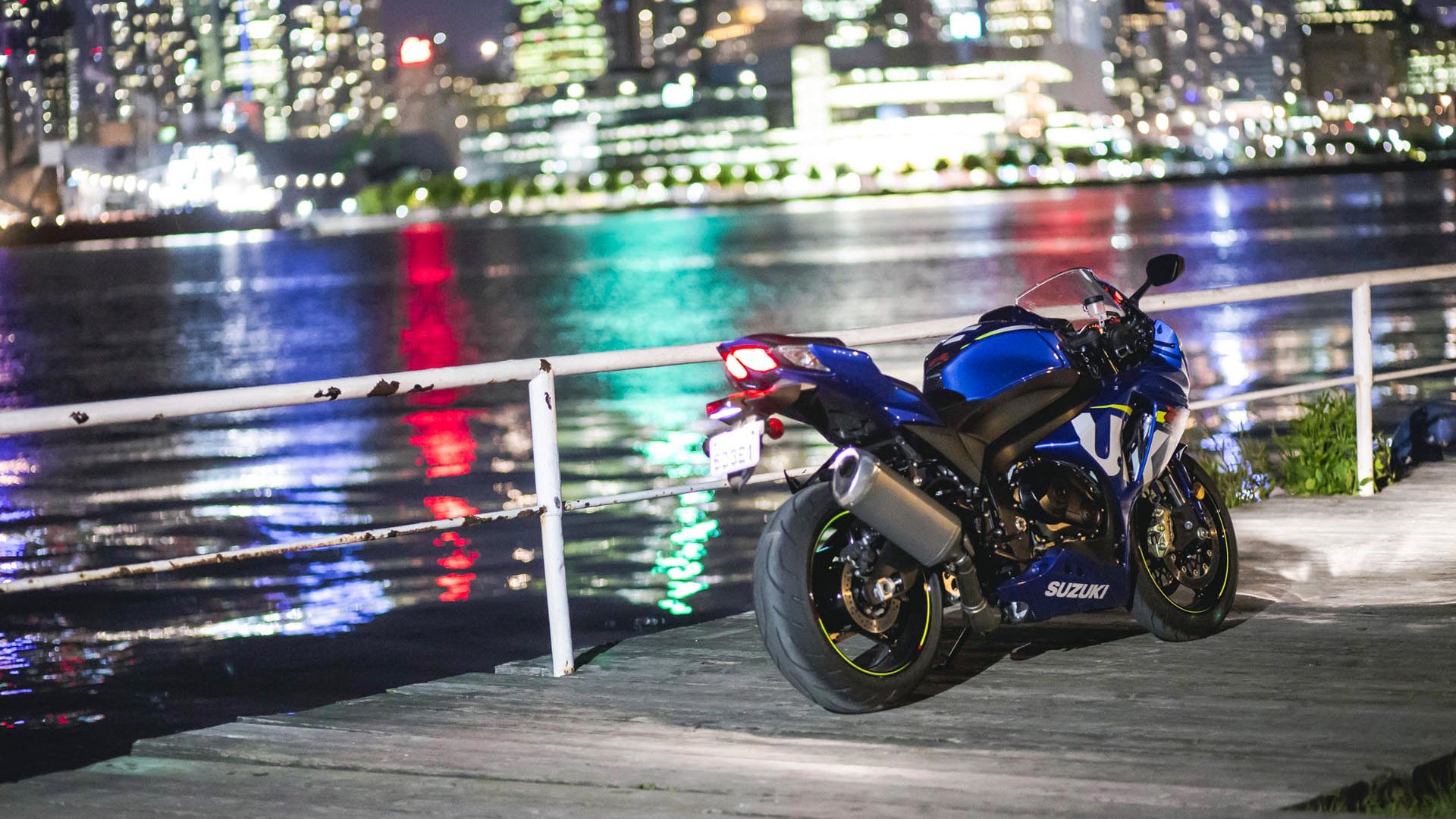Review by Jacob Black, photos by Jacob Black and Ronnie Fung
The bus on my left lurches toward me suddenly, tilting over in my direction. Not sure why, and with traffic ahead blocking that path I brake. Hard. As I fall in behind the big yellow rig the tail end of it dips violently.
Now I see the problem: 20-odd school children are rushing from one side of the bus to the other and pinning themselves against the glass to stare at the bright blue motorbike underneath me! They’re pointing and waving, and at least one of them is doing the universal signal for “Hey Mister! Do a wheelie!” – I don’t of course.
An icon in the sportsbike world, the 2015 Suzuki GSX-R1000 has a new trick to attract attention: vivid blue paint and vibrant fluoro graphics – including lime-green wheel stripes – which throwback to the time when fluoro graphics and colours were the fashion on sport bikes.

Last year, when I compared the 2014 Suzuki GSX-R1000 vs the 2014 Jaguar F-Type Coupe I said the Suzuki lacked the visual impact of the Jag – this new-for-2015 colour scheme changes that. And the colour is about more than just peacocking, the blue commemorates Suzuki’s return to MotoGP racing.
That racing pedigree has meant a lot to Suzuki, and while the GSX-RR racing in MotoGP is significantly different to the road-going GSX-R1000 we see today, a lot of the technology will trickle down as it did in the generation of bikes before this one, and the generation before that.
It’s almost incomprehensible that sport bikes could get faster. This one, with its inline four cylinder 999cc engine, generates around 185 hp and weighs a piddling 203 kg wringing wet. Crack the throttle and a violent cacophony erupts from beneath you as the four cylinders screech angrily toward the 13,500 rpm redline. The 190/50 ZR17 rear tire struggles to maintain traction.
When it does hook up, the 120/70 ZR17 front tire gets involved in a bitter fight with gravity and your rider wipes about 10,000 of his allocated heart beats from his lifetime supply.

There are subtler options. The right grip has a button for one of three different riding modes, but not using the most aggressive one is pretty much pointless. Not that the gap between all three is large, but you don’t buy a GSX-R1000 for its subtlety. Well, I don’t.
Riding around town, and even commuting the bike is ergonomically very comfortable, more comfortable than the BMW S1000RR and a lot more comfortable than the MV Agusta F3 800, thanks to the three-position adjustable rearsets which help you get your feet into the right position, and the slightly more spacious layout. As a result, the GSX-R doesn’t feel quite as sharp in corners as either of those (though the 800 is hardly a comparison being so much smaller).
The overhang on the airbox is just a tad shallower than it ought to be, which makes it harder to lock your leg in position for cornering, but that’s a nitpick on a bike that is otherwise very easy to ride, and to ride hard.
Crank it over and the GSX-R falls into corners smoothly and remains unflustered by all but the biggest bumps. In fact, one unexpected mid-corner bump had the 1000 just about leaving the ground but the 43mm upside-down Big-Piston forks absorbed both the hit and the rebound evenly, the Showa monoshock at the back might as well have asked “what bump?”

Cranked over, throttle open and speed building, I really didn’t expect the seam in the road to have such a dramatic hump to it, and saw the imminent crash happening in my mind as the front wheel started to climb – yet the big Suzuki took it in stride with complete ease. Who says sportbikes are dangerous?
And if you do encounter a situation that neither luck nor suspension tuning can help you out of, the GSX-R1000 has another surprise for you. Of all the bikes we’ve tested this summer, this had the best brake feel by a significant margin. The absolute best. The lever felt progressive and convincing, the brakes bit early and only became more efficient the harder you squeezed the lever.
Some bikes are perfect for wheelies, I think this one would be ideal for stoppies. Not that we would, of course.
If, rather than hooliganism and tomfoolery, you’re using those brakes to wipe off speed in preparation for a rapidly approaching corner, there’s a good chance you’ll find yourself getting off them a long time before you need to turn in as the bike hauls itself to a stop faster than you anticipated. A back-torque limiting clutch helps keep the back end in check even if you do bang down a cog or two early, and the entire bike corners with a rewarding grace.
This is a bike that is surprisingly easy to ride on normal roads, and yet equally rewarding to ride hard. Not to mention that it’s a piddling $14,999! All that, and you’ll have busloads of onlookers excitedly staring at you on a daily basis.
It’s good to ride an icon.
Key Specs
Engine: 999cc, inline four
Horsepower: 185 hp (unofficial)
Torque: 80 lb-ft (unofficial)
Curb weight (wet): 203 kg
Seat height: 810 mm
Length: 2,045 mm
Wheelbase: 1,405 mm
Width: 705 mm
Tires front/rear: 120/70 ZR 17, 190/55 ZR17
Fuel Capacity: 17.5L
Suspension: Front - Showa Inverted telescopic Big Piston front Forks (BPF) , coil spring, oil damped, adjustable compression & rebound damping and spring preload
Rear - Showa Link type, coil spring, oil damped, adjustable compression & rebound damping and spring preload

















